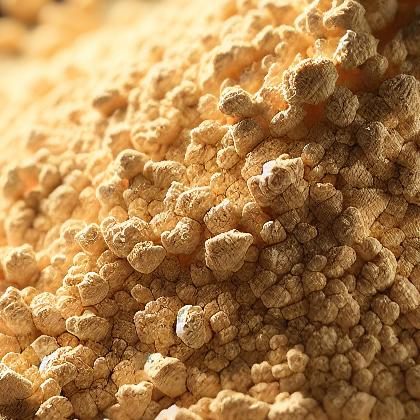Showing results for 'Dry yeast'
close
Dry Yeast

Baker's yeast is the common name for the strains of yeast commonly used as a leavening agent in baking bread and bakery products, where it converts the fermentable sugars present in the dough into carbon dioxide and ethanol. Baker's yeast is of the species Saccharomyces cerevisiae,[1] which is the same species (but a different strain) commonly used in alcoholic fermentation, which is called brewer's yeast.[2] Baker's yeast is also a single-cell microorganism found on and around the human body.
Dry yeast Pairs With:
Food Item
Flavor Affinity Level
Dry yeast Properties:
| Food Property | Type | Description |
|---|---|---|
| Flavor Profile | Umami | Dry yeast has a savory and rich flavor profile due to the presence of glutamic acid. |
| Texture | Dryness | Dry yeast has a powdery, dry texture with low moisture content, which helps in its long-term storage. |
| Nutritional Value | Macronutrients | Dry yeast is a good source of protein and carbohydrates, essential for yeast fermentation during baking. |
| Micronutrients | Dry yeast contains trace amounts of vitamins and minerals like B vitamins and zinc, which are important for overall health. | |
| Chemical Composition | Enzymatic Activity | Dry yeast contains enzymes that play a crucial role in fermentation processes, breaking down sugars to produce carbon dioxide and alcohol. |
| Cooking Behavior | Heat Conductivity | Dry yeast requires warmth to activate and grow, making it essential for proofing bread dough in a warm environment. |
| Water Retention | Dry yeast can absorb water in dough, contributing to the rise and texture of baked goods. | |
| Oil Absorption | Dry yeast does not absorb oil during baking processes but helps in leavening and adding flavor to baked goods. |
Food Pairing App - Version 1.2.0
